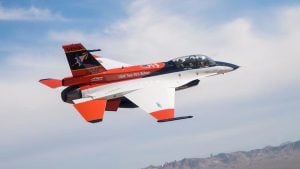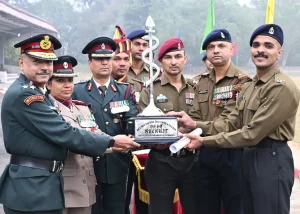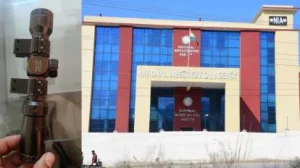The Indian Armed Forces, renowned for their strategic prowess and technological advancements, have significantly bolstered their defense capabilities over the years.
NDA 1 2024 Missiles of Indian Armed Forces Lecture
Among the various components of defense, missiles play a pivotal role in safeguarding the nation’s interests, ensuring deterrence, and maintaining a credible defense posture. The National Defence Academy (NDA) serves as a breeding ground for future military leaders, where cadets are groomed to understand and utilize advanced defense technologies, including missiles. As of the NDA 1 session in 2024, let’s delve into the array of missiles that constitute the backbone of India’s defense strategy.
- Surface-to-Air Missiles (SAMs):
- Akash Missile System: Developed by the Defence Research and Development Organisation (DRDO), the Akash missile is a potent surface-to-air missile system designed to intercept aerial threats up to a range of 30 kilometers. With its advanced targeting capabilities and multi-target engagement abilities, Akash provides crucial air defense cover to vital assets and military installations.
- Barak 8: A jointly developed missile system by India and Israel, Barak 8 is a long-range surface-to-air missile designed to intercept a variety of airborne threats, including aircraft, helicopters, drones, and anti-ship missiles. Its versatility and advanced guidance systems make it a formidable asset for the Indian Navy and other defense establishments.
- Ballistic Missiles:
- Agni Series: The Agni series of ballistic missiles represents India’s indigenous long-range strategic deterrent. Ranging from Agni-I to Agni-V, these missiles are capable of carrying both conventional and nuclear warheads to significant distances, thereby providing the Indian Armed Forces with credible deterrence capabilities against potential adversaries.
- Prithvi Series: Developed as part of India’s tactical missile arsenal, the Prithvi series comprises short-range ballistic missiles primarily intended for battlefield applications. With variants such as Prithvi-I, Prithvi-II, and Prithvi-III, these missiles offer precise targeting capabilities and are instrumental in enhancing the military’s operational flexibility.
- Cruise Missiles:
- BrahMos: A joint venture between India and Russia, BrahMos stands as one of the world’s fastest supersonic cruise missiles. Named after the Brahmaputra and Moscow rivers, this missile system boasts exceptional speed, precision, and firepower, making it a formidable asset for both land and naval operations. With its extended range and pinpoint accuracy, BrahMos significantly enhances India’s strike capabilities across diverse theaters of operation.
- Nirbhay: Developed by DRDO, Nirbhay is an indigenously designed subsonic cruise missile capable of delivering conventional warheads with precision over long distances. Equipped with advanced navigation and guidance systems, Nirbhay offers the Indian Armed Forces a versatile and cost-effective solution for engaging ground targets with minimal collateral damage.
Conclusion: As the Indian Armed Forces continue to evolve and modernize, the integration of advanced missile systems remains paramount to maintaining a robust defense posture. From surface-to-air missiles ensuring airspace sovereignty to ballistic and cruise missiles bolstering strategic deterrence and offensive capabilities, the arsenal of missiles showcased at NDA 1 in 2024 underscores India’s commitment to safeguarding its national interests and territorial integrity. With ongoing advancements in missile technology and indigenous development initiatives, the Indian defense establishment is poised to meet future challenges head-on, ensuring the nation’s security in an ever-evolving geopolitical landscape.



















